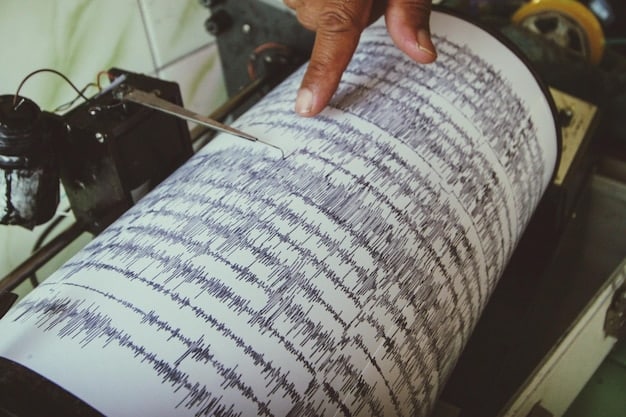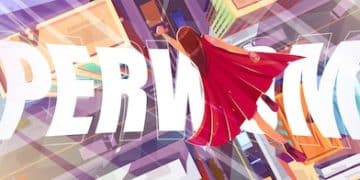Comic Book Import Tariffs: Predicting 2025 Price Impacts

In 2025, new federal comic book import tariffs are expected to significantly impact prices, potentially leading to higher costs for consumers and altered strategies for retailers and publishers in the US market.
The introduction of new federal import tariffs on comic books is poised to reshape the market in 2025. The impact will be felt across the entire supply chain, from publishers and distributors to retailers and, ultimately, consumers.
Understanding the New Federal Comic Book Import Tariffs
To fully grasp the potential price changes in 2025, it’s crucial to first understand the specifics of the new federal comic book import tariffs. These tariffs, like any import tax, are designed to generate revenue for the government and potentially protect domestic industries. However, in the case of comic books, the US market is heavily reliant on international printing and distribution.
The implications of these tariffs extend beyond just the immediate cost increase. They influence sourcing decisions for publishers, potentially leading to shifts in where comic books are printed and how they’re distributed. This has knock-on effects for foreign printing companies and the overall global comic book supply chain.
Key Components of the Tariff
Several key aspects of the tariff structure determine its ultimate impact. Understanding these components is essential for predicting how prices will shift.
- Tariff Rate: The percentage rate applied to the value of imported comic books. This is the most direct factor influencing price increases.
- Scope of Products: The specific types of comic books covered by the tariff. Does it include graphic novels, manga, or only single-issue comics?
- Country of Origin: The countries from which comic books are imported. Tariffs might be applied differently based on trade agreements or political considerations.
- Implementation Date: When the tariff officially takes effect. This date is crucial for publishers and retailers to adjust their strategies.
It’s essential to consult official government publications and trade organization reports for the precise details of the tariff. Misunderstanding these nuances can lead to inaccurate predictions about the market.
In conclusion, understanding the granular details of the new federal comic book import tariffs is vital to accurately assess their downstream effects on pricing and the overall comic book ecosystem.
Analyzing Production and Distribution Costs
The comic book industry relies on a complex system of production and distribution. Increases in import tariffs affect various stages, from initial printing to final retail sales. Examining these costs sheds light on the potential impact on comic book prices in 2025.
Printing constitutes a significant portion of the overall cost, and many large publishers utilize overseas printing facilities for their lower prices. Distribution is handled by a network of specialized companies that deliver comics to the local stores. The additional expenses from tariffs affect these different facets of the comic book creation.

Printing Locations and Costs
The geographic location of printing facilities plays a pivotal role in overall production expenses. Many US-based publishers utilize facilities in Asia and Europe to cut costs.
- Overseas Printing Savings: Printing in Asian countries like China and South Korea is typically cheaper due to lower labor costs and material expenses.
- Transportation Costs: While printing overseas saves money, transportation adds to the total cost. Tariffs exacerbate these existing expenses.
- Domestic Printing Alternatives: Some publishers may consider switching to domestic printing, but this could raise production costs significantly.
These considerations highlight the complex balancing act publishers must undertake when deciding where to print their comic books, particularly in light of new tariffs.
Thus, analyzing the production and distribution infrastructure is essential to fully understand the monetary effects of novel import duties on comic books.
Forecasting the Price Increase for Consumers
The ultimate concern for comic book enthusiasts is how these tariffs translate into price increases at the retail level. Several factors determine the extent of the price hike, and it’s not always a direct pass-through of the tariff percentage.
Retailers must manage new costs against the possible loss of consumers. They can choose to absorb the tariffs to avoid scaring away buyers, or they can raise shop prices and trust that customers will purchase despite the increase.
Retailer Strategies and Market Conditions
Retailers adopt diverse strategies to cope with rising costs depending on their market position and consumer base.
- Absorbing Costs: Retailers might initially absorb some of the tariff costs to remain competitive, especially in areas with multiple comic book stores.
- Price Increases: Eventually, retailers may need to increase prices to maintain profitability, which could lead to lower sales volumes.
- Subscription Adjustments: Comic book subscriptions might see price increases, affecting loyal customers who rely on consistent pricing.
Retailers must carefully weigh the pros and cons of each strategy to minimize losses and keep customers happy.
Overall, accurately calculating the final price hike necessitates analyzing the various elements that govern the economics of the market.
Potential Adjustments by Publishers and Distributors
Faced with higher import costs, publishers and distributors have a range of options to mitigate the impact of tariffs. These adjustments can significantly influence the availability and affordability of comic books in 2025.
These businesses will potentially renegotiate agreements, modify print quantities, and seek government assistance. Some may choose to concentrate on popular or lucrative titles to minimize danger, while others may try to use fresh markets.

Strategies for Cost Mitigation
Several strategies enable publishers and distributors to lessen the effects of the tariffs.
- Renegotiating Printing Contracts: Publishers may seek better rates from printing companies, even if it means switching to domestic facilities.
- Optimizing Distribution: Distributors can streamline logistics to reduce transportation costs and minimize the impact of tariffs.
- Seeking Government Relief: Publishers and distributors might lobby for tariff exemptions or subsidies to offset the cost increase.
The effectiveness of these strategies depends on market dynamics and the willingness of different industry players to cooperate.
In essence, the decisions of publishers and distributors will be main determinants in shaping the comic book landscape in 2025.
Impact on Independent Comic Book Creators
While large publishers have resources to navigate tariff changes, independent comic book creators face unique challenges. Their limited budgets and reliance on self-publishing platforms make them particularly vulnerable to import tariffs.
This category of authors often depends on tiny print runs handled overseas, where the tax burden can be a substantial obstacle. They may also have trouble getting into new markets or adjusting to quick financial changes.
Challenges and Strategies for Independent Creators
Independent creators must adopt innovative strategies to stay afloat in a tariff-laden environment.
- Crowdfunding and Pre-Orders: Utilizing platforms like Kickstarter and Indiegogo to fund printing runs and gauge demand beforehand.
- Digital Distribution: Prioritizing digital sales through platforms like ComiXology and Gumroad to avoid import costs altogether.
- Print-on-Demand Services: Employing print-on-demand services to minimize upfront investment and reduce the risk of unsold inventory.
Community support and innovative business models are crucial for the survival of independent comic book creators.
In closing, it is important to remember the importance of community and novel tactics in helping independent artists adjust to emerging tariff policies.
Long-Term Effects on the Comic Book Industry
The introduction of new federal comic book import tariffs is not just a short-term challenge; it could trigger long-lasting changes in the industry. These effects could reshape the market for years to come.
The expansion of digital comics, the consolidation of the industry, and modifications in customer behavior are all long-term effects of the tariffs. An emphasis on local creation and novel distribution methods can also result from these developments.
Possible Industry Transformations
Several long-term effects are worth considering:
- Digital Shift: A more accelerated migration to digital comics, reducing reliance on physical copies and import expenses.
- Market Consolidation: Minor publishers may become less competitive since lower levels of entry become more difficult, which will cause big firms to dominate more.
- Shifting Consumer Behavior: Customers could become more price-conscious, opting for fewer titles or exploring alternative entertainment mediums.
These potential transformations highlight the need for adaptability and strategic planning across the comic book industry.
In closing, it is crucial to understand and be ready for such changes as they relate to the long-term health of the comic book business.
| Key Point | Brief Description |
|---|---|
| 💰 Tariff Impact | Import tariffs increase the cost of producing and distributing comic books. |
| 📈 Price Hikes | Consumers are likely to see higher prices for both single issues and trade paperbacks. |
| 💻 Digital Growth | More consumers might switch to digital comics to avoid higher physical prices. |
| 🤝 Indie Support | Supporting independent creators is vital as they face greater financial challenges. |
FAQ About Comic Book Import Tariffs
▼
Import tariffs are taxes imposed on goods brought into a country. They increase the cost of imported items, potentially raising prices for consumers and protecting domestic industries.
▼
The tariffs are expected to increase the cost of comic books printed overseas, leading to higher prices for consumers at retail stores and through subscriptions.
▼
Publishers can renegotiate printing contracts, optimize distribution networks, and explore domestic printing options to mitigate the financial impact.
▼
Independent creators may face greater financial challenges due to tariff costs. They can utilize crowdfunding, digital distribution, and print-on-demand services.
▼
The industry could see a greater shift to digital comics, market consolidation among publishers, and changes in consumer purchasing behavior.
Conclusion
The new federal comic book import tariffs are set to introduce significant shifts in the comic book market in 2025. While the exact magnitude of the price increases and long-term effects remains to be seen, it’s clear that publishers, retailers, independent creators, and consumers will all need to adapt to this changing landscape. Staying informed and supporting the industry through these transitions will be key.





